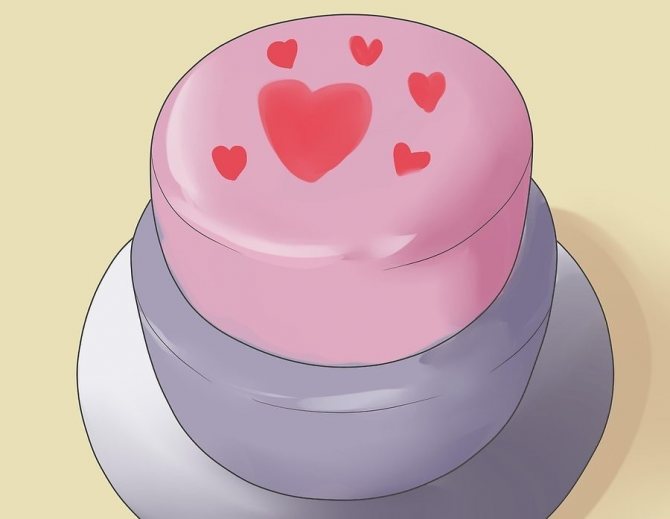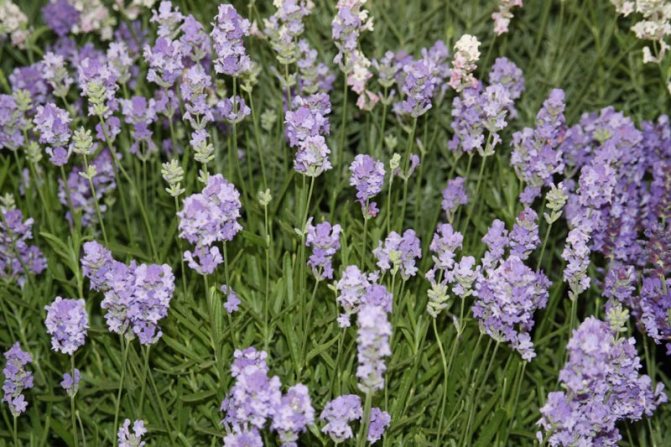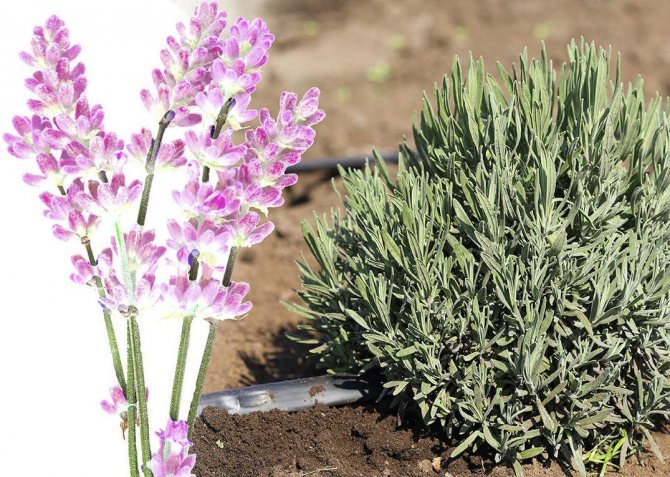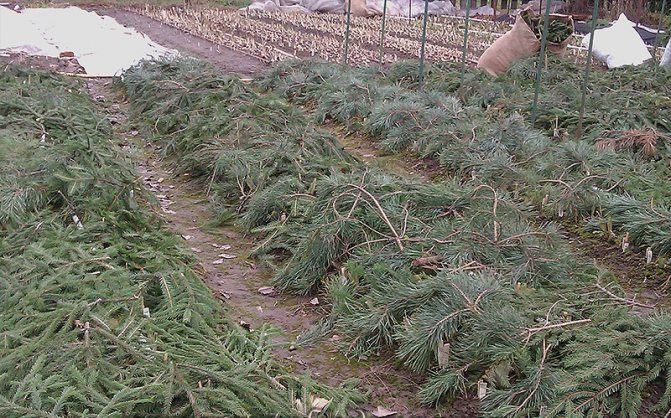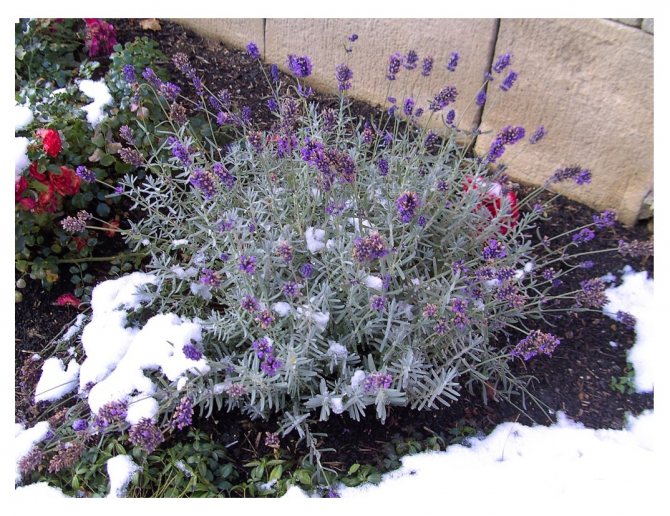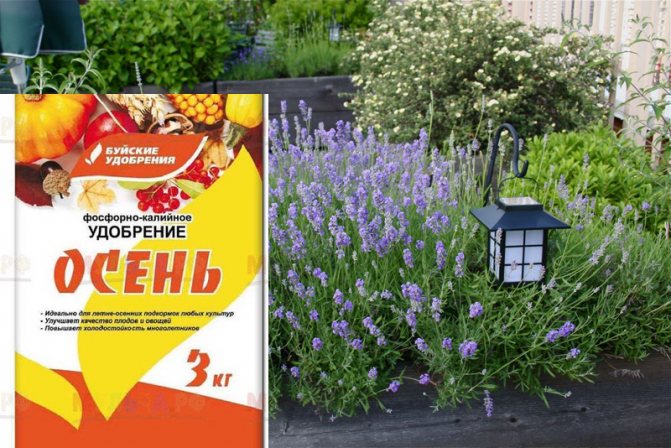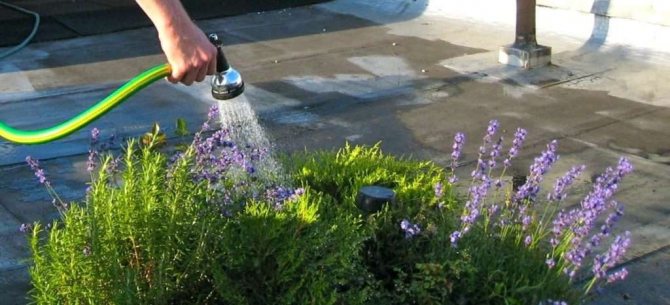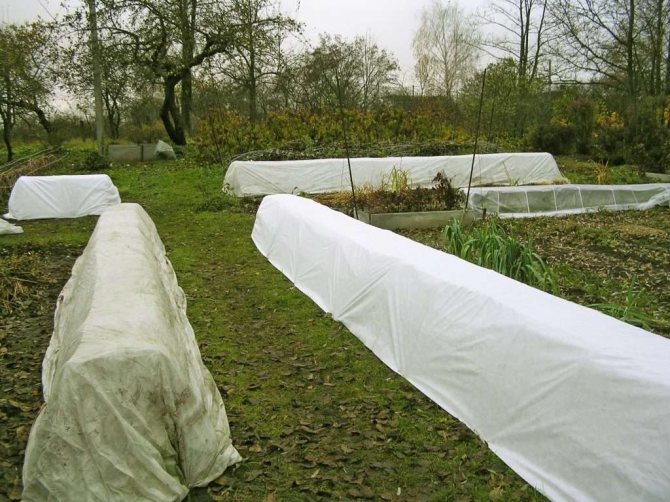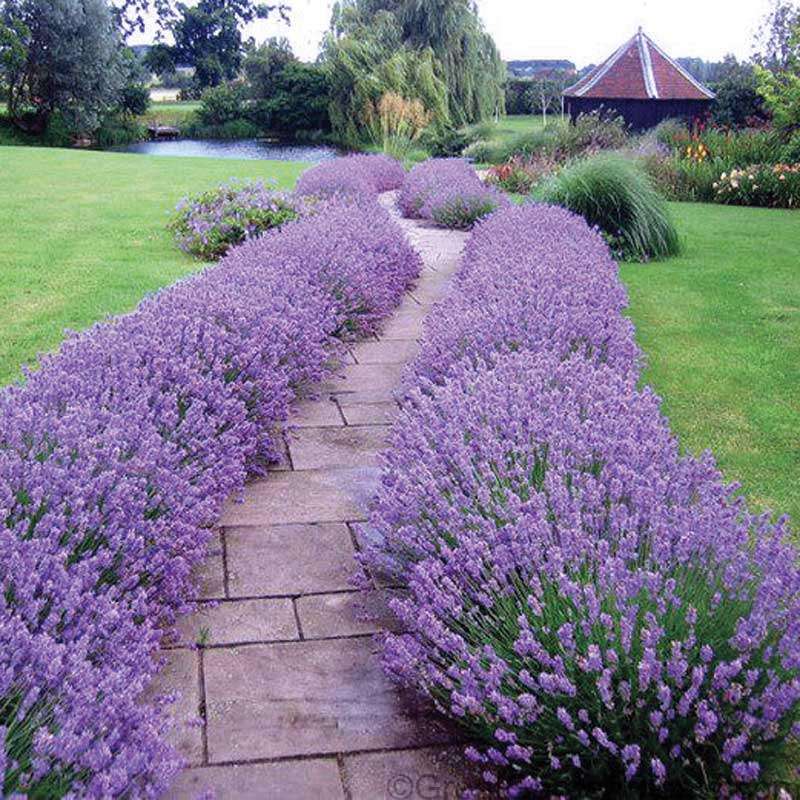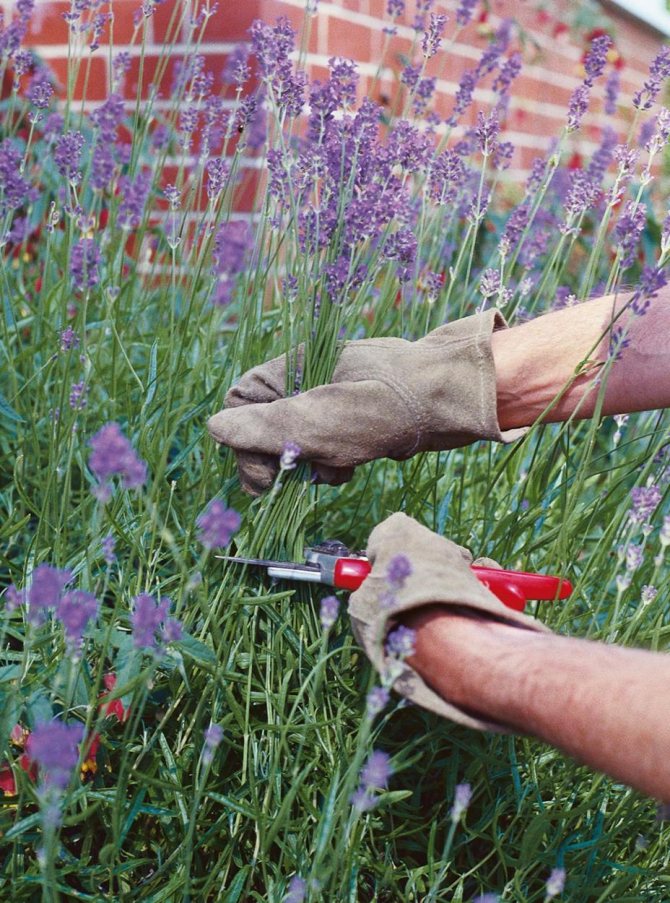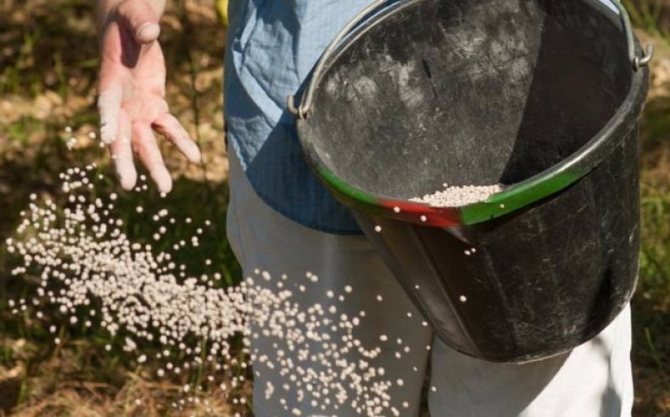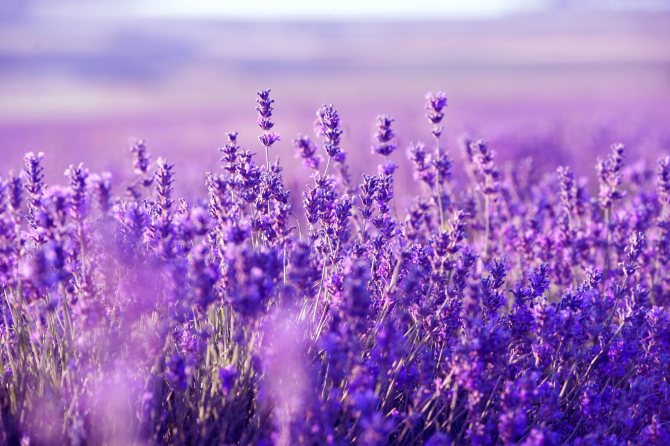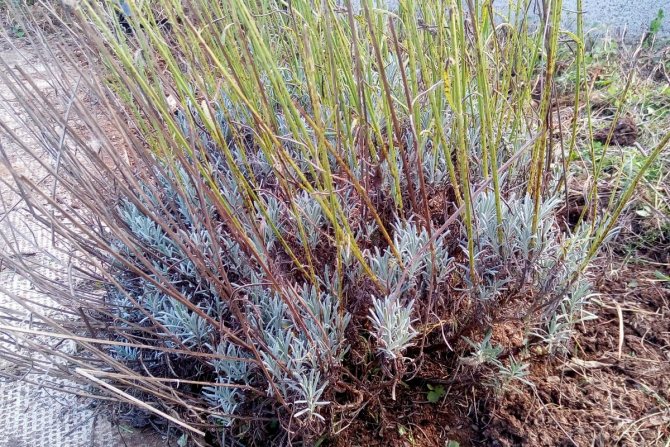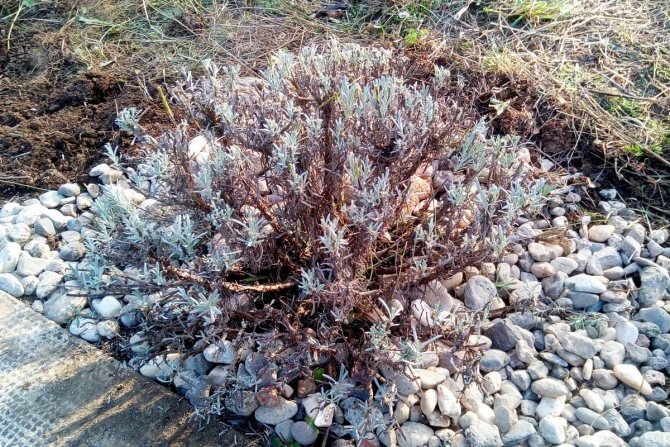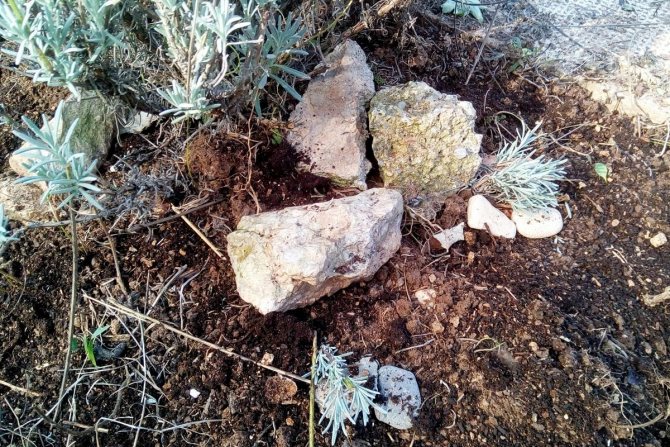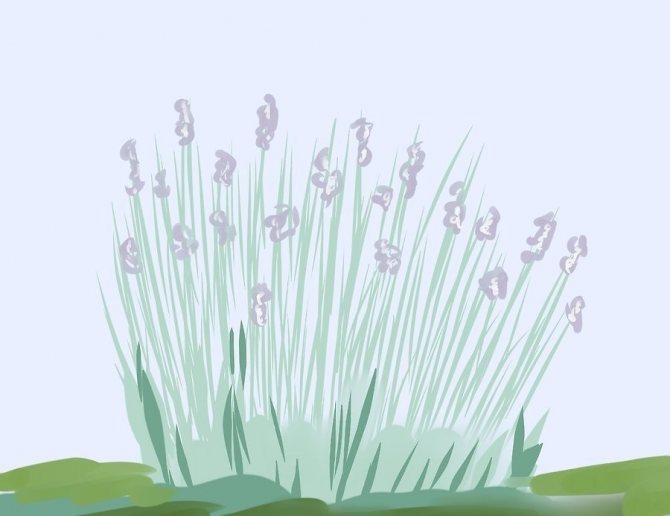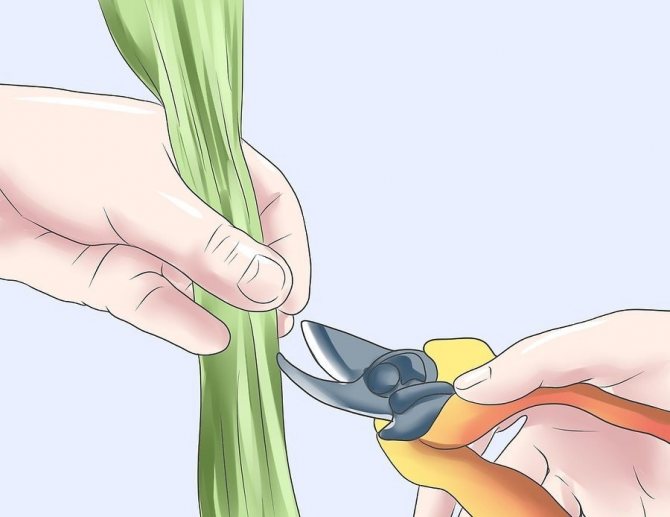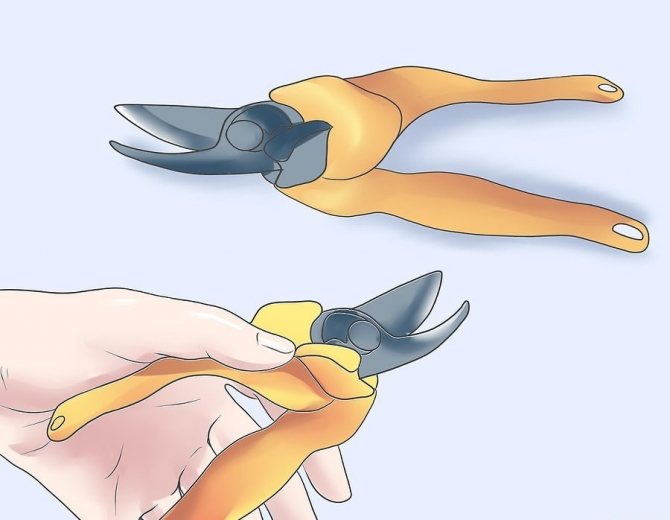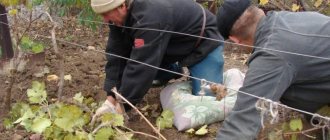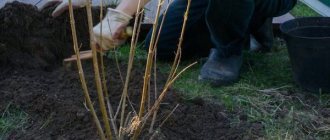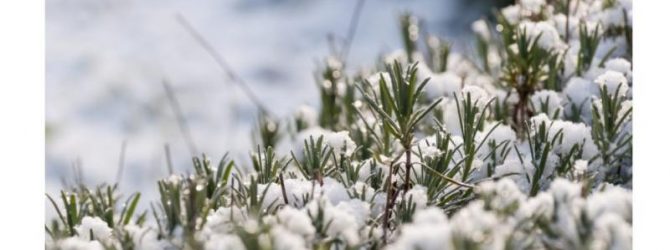
Lavender is well known and loved by Russian gardeners. Despite the fact that the plant comes from the warm and sunny Mediterranean, it is successfully grown both in the Moscow region and in cooler regions, for example, the Far East. The State Register of Breeding Achievements of Russia includes several varieties approved for cultivation in different regions of the country. It is clear that summer, even cold and short, does not threaten the growth of lavender. But what about winter?
How to keep lavender outdoors in winter
In order for the lavender bush to winter safely, it is necessary to prepare it in the fall - cut off long shoots, feed, clear weeds and loosen the soil.


Cutting lavender too short does not make sense, it is enough to cut a haircut, as indicated in the diagram
There are general rules, the implementation of which helps the plant to survive frost or temperature changes safely:
- So that the snow that has huddled inside the bush does not break the plant, it is tied with a bundle. To do this, you need to use natural strong threads, for example, twine.
- The soil in the near-stem circle should be mulched to keep the roots warmer. As a mulch, dry peat or pine litter is suitable, in extreme cases, dry sand or sawdust. But only not fallen leaves - under them, from an excess of moisture, the roots can vanish, and pathogens of fungal diseases feel great in decaying foliage.
- A hut of spruce branches is erected on top of the bush. To prevent the structure from being swept away by the wind, it is tied with a string. Additionally, you can install a box made of plywood or wood (always with holes for ventilation) and secure.
Shelter tips
Now let's look at how to cover lavender bushes for the winter. There are several general rules for preparing tall shrubs for the upcoming cold and cold weather:
- Collect all the branches of the bush into a single bunch. Tie this bundle with twine. In this way, snow can be prevented from entering the bush.
- Mulch the soil in the trunk circle with peat, straw, hay, small spruce twigs, dry soil and sand. The height of the mulch layer should be within 15–30 cm. It is not recommended to use dry opal foliage as mulch. The root system of lavender, covered with fallen leaves, begins to grow out over time.
- The above-ground part of the ornamental shrub should be insulated with any non-woven covering material. To enhance the thermal insulation, you can build a "hut" of pine or spruce branches.
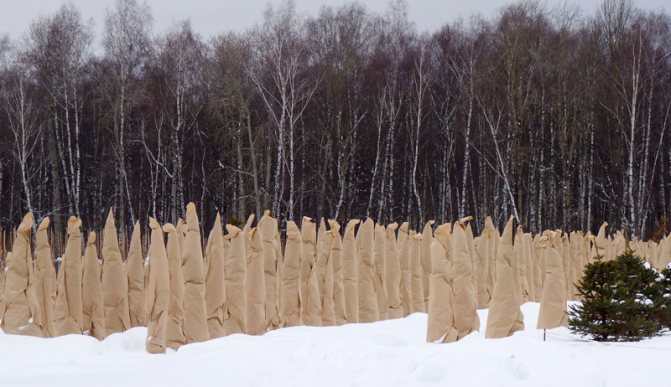

Regional features
The peculiarities of the preparation and shelter of horticultural crops growing on the territory of the summer cottage depend on the climatic zone of growth. So, the preparation and shelter of lavender in central Russia, including in the Moscow region, begins in early autumn. This region is characterized by warm winters with little snow, however, sudden changes in temperature regimes are more dangerous for ornamental plants than severe frosts.
During the thaw period, melt water settles in the ground, unexpected cooling and severe frosts lead to the formation of glaciers on the roots. To prevent freezing of the root system, lavender bushes need to be mulched with peat, straw and hay. In severe frosts, the branches should be insulated with any non-woven covering material.
Lavender grown in the Kuban, Crimea, Krasnodar, Stavropol and other southern regions of the country is not harbored for the winter. The trunk circle is mulched with peat and straw, the branches are tied and bent to the ground so that the gusty wind does not damage them.
Shrubs growing in the northern regions of Russia require more thorough preparation and shelter. In the Volga region, Siberia and the Urals, where the air temperature can drop below 35 ° C, lavender is insulated with agrofibre, lutrasil, jute or geotextile fabric. Pine or spruce branches are laid on top of the covering material, which keep heat, but do not disturb air circulation.
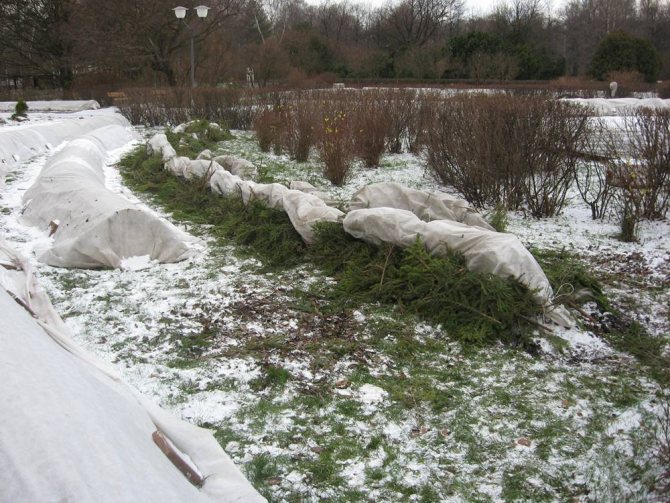

It is not recommended to use plastic wrap that does not allow air to pass through. The lack of openings for air exchange leads to the accumulation of moisture inside. The plant becomes moldy and starts to rot.
Correctly selected planting material will help prevent freezing of garden crops. For the northern regions, the following winter-hardy lavender varieties are suitable: Buena Vista, Beechwood, Rosea, Alba, Hidcote Blue, Hidcote Giant, Munstead, etc.
Wintering of potted species
Recently, potted species of ornamental plants are gaining popularity. Cultivated in flower containers and pots, lavender is widely used in landscaping to decorate terraces, gazebos, columns and garden arches.
Preparation of potted lavender species for wintering consists in pruning shrubs and applying mineral fertilizers to the soil. Pot-type lavender should not be left outside, crops that are unstable to cold and frost will not withstand a drop in air temperature. To prevent small lavender bushes from dying in winter, it is recommended to move the flowerpots to a heated room.
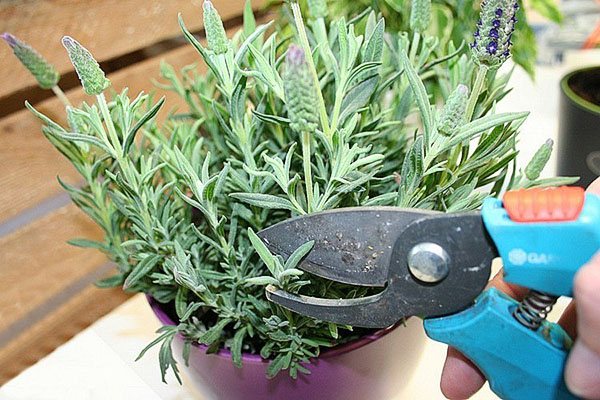

Shelter nuances depending on regions
Each region has its own characteristics, adhering to which the gardener makes the wintering of lavender as safe as possible.
Middle zone of Russia
The coldest month in the region is January, at which time the temperature drops to -30 ° C. But sometimes thaws occur, the snow cover melts, exposing the soil. Frosts follow again. To make lavender comfortable in such conditions, the bush is surrounded with a thick layer of mulch, and in the absence of snow, covered with spruce branches.


In central Russia, lavender can winter without shelter, but if the snow cover is not enough, the plant is covered with spruce branches
Volga region
In this region, the winter period is colder, but also snowy. Therefore, mulching the trunk circle and building a hut from spruce branches is quite enough. But this is subject to abundant snow cover, which additionally warms the plant. If there is no snow, then the spruce tree structure can be additionally insulated with any non-woven material that allows air to pass through.
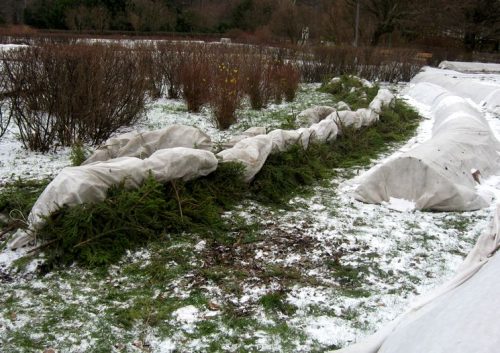

Non-woven material is an indispensable thing for a gardener, underneath it is warm and easy to breathe lavender in winter
Siberia and the Urals
Even in the presence of snow, additional insulation is indispensable. In addition to hilling with dry soil and spruce branches, a box or box is strengthened above the bush.
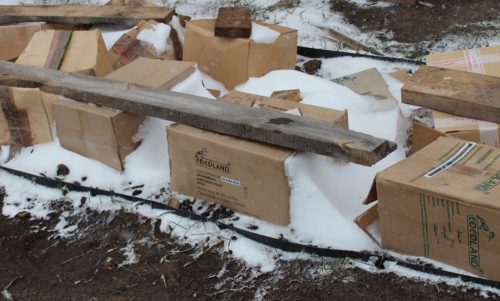

In Siberian frosts, the main thing for lavender is not beauty, but warmth.
In a warm region, it is enough to simply mulch the trunk circle. Quite mild, albeit snowless winters allow lavender to winter safely.
My lavender bush grows in a secluded place, protected from the drying winter wind. Therefore, it hibernates safely without any shelters.
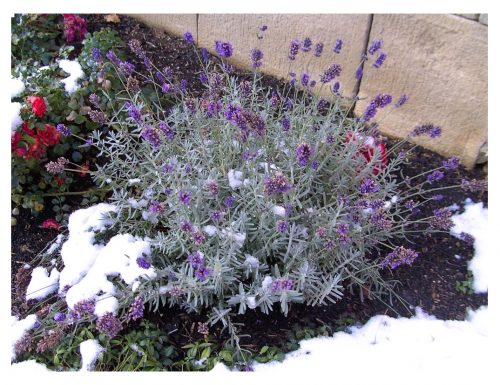

In the south, lavender feels great in winter, even with poor snow cover.
Recently, many gardeners have been arguing about the advisability of pruning lavender in the fall. This part of the preparation for winter may not be carried out at the discretion of the grower. To prevent a heat-loving plant from suffering from severe Russian frosts, try to choose only zoned varieties.Competent preparation for the winter and the organization of a shelter suitable for your conditions will allow lavender to safely survive a difficult period, and will save you from worries.
Lavender is a perennial evergreen shrub. This is a good honey plant. Narrow-leaved lavender inflorescences are used in perfumery, medicine, and household chemicals. Most often grown on an industrial scale. But many flower growers decorate their gardens and estates with this ornamental plant. Lavender can be propagated vegetatively and by seed, as well as by cuttings. To grow lavender, to get a beautiful and vigorous flowering, you need to provide decent care. To do this, you need to know the basics of growing this plant, as well as how to cover lavender for the winter.
Transplanting lavender in the fall - preparing for winter


I have long dreamed of growing lavender. At first I thought of planting her in a pot, but was afraid that the pungent scent would disturb the children. And then we just bought a dacha, I began to tinker with gusto in the beds, not forgetting about the flower beds. Lavender was the first flower I grew from seed.
Why do we transplant lavender
There can be many reasons:
- buying a flower and transferring a seedling from a pot to open ground;
- reproduction of lavender, spontaneously growing new bushes;
- moving and the desire to take with you the most beloved flowers;
- landscape re-planning of the site ...
And this is not a complete list of reasons.
In which regions can lavender be transplanted in the fall?
Since lavender is a thermophilic plant, it should be planted in the middle lane and in the north in the spring, when all frosts are over. If you plant it here in the fall, by the frost it may not have time to take root and will freeze out.
If you live in the southern regions of Russia, Ukraine or Moldova, this flower will survive the autumn transplant well.
As a rule, the transplant is carried out in mid-October. However, in the region of Voronezh, Samara and Ulyanovsk, it is better to hurry by sending lavender into the open ground in early September.
Why not in the spring?
Probably, you have a completely logical question: since the bush can freeze, why bother with it at all? Isn't it better to transplant lavender in spring?
The answer is simple: after warm May, when the frosts are over and lavender can be planted, a hot, dry summer will begin in the southern regions. This means that you will be exhausted to water the plant. But summer is not the time for flowers, but for vegetables, for which gardeners often do not have enough strength (and the same water).
And autumn is the ideal time for rooting: no heat, the air and soil have the optimal temperature, there is enough moisture in the ground for the roots of the plant.
But this is only in the south. In central Russia, as I said above, it is better to plant lavender in the spring.
Features of lavender care in autumn
Lavender is a thermophilic plant. In warm regions, its soft leaves, covered with white felt, feel comfortable. But in the harsh climate of the northern regions, special care is required for the plant. It is necessary to protect the shrub from freezing in the fall. For this, several procedures are carried out:
- thorough watering,
- loosening around the bush,
- trimming,
- weed removal,
- fertilizing with mineral fertilizers,
- shelter for the winter.
The soil on which lavender grows should be loose. It is imperative that moisture and air constantly penetrate the plant's root system. If the soil is heavy, the soil should be loosened regularly to remove the weeds.
To make it easier to care for lavender, you can pour mulch under each lavender bush; fallen leaves are suitable for it. True, they do not look very aesthetically pleasing, so most flower growers scatter multi-colored decorative substrates around the bushes. It looks very nice and useful.
You need to be careful about watering.Waterlogging of the soil should not be allowed, root rot may begin, the leaves will turn yellow. But it is also impossible to overdry the soil. Flowering will immediately become scarce, the bush may die completely. Optimally, watering as needed.
Top dressing for the most part is carried out before the beginning of budding, in the spring months. In the fall, you can use potassium and phosphorus as top dressing. When using multi-colored substrates, you do not need to feed the plant. Substrates will gradually decompose, mineral fertilizers will enter the soil.
In each region, the shelter for the winter may be different. But it is imperative to cover lavender for the winter, otherwise it may freeze out. Caring for lavender is not difficult, if you follow all the procedures, the shrub will delight you with rapid flowering.
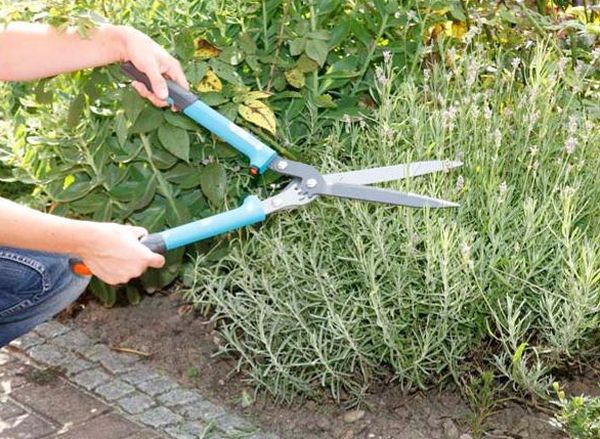

Why prune lavender
As a perennial plant, lavender needs regular pruning. The stems of its overgrown bushes over time thicken and become hard, flowering ceases to be abundant. The decorativeness of uncut bushes that have lost their attractive compact shape is significantly reduced.
To minimize the stress of pruning, lavender bushes are pruned partly in the spring and partly in the fall. Spring pruning, consisting in the removal of damaged, dry and frozen shoots, is mainly of a sanitary nature.
Autumn pruning performed:
- In order to help a thermophilic culture to winter without much loss. In regions with little snowy winters, long shoots are necessarily shortened, since with a sharp drop in temperature, they are likely to freeze out. In addition, frozen branches become extremely fragile, unable to withstand the effects of strong cold winds. Broken twigs can subsequently be attacked by insect pests or become a breeding ground for bacterial or viral infections.
- To keep lavender bushes compact for a long time. However, not all growers resort to strong pruning of the green part of the shoots. Some of them prefer to keep the branches as long as possible, leaving the crown shape unchanged. They proceed from the belief that practically untouched bushes completely disappear under the snow and, being warm, do not freeze at all.
Pruning lavender in the fall
Plant pruning is carried out throughout the growing season. But we will talk specifically about the autumn pruning of lavender. Is autumn pruning necessary? During this period, pruning of lavender is needed to maintain the compactness of the shrub. But the ground part of the shoots is not removed by all gardeners. Many growers leave almost the entire shoot, preserving the beauty of the shrub. They believe that lavender is covered with snow, in this form it is warm until spring and does not freeze.
If the winter is with little snow, long shoots can freeze out due to a piercing wind and a sharp drop in temperature. When freezing, long trunks are prone to brittleness. Wind brittleness is unacceptable. Broken branches can bring on various diseases, harmful insects can appear on damaged parts.
When is the best time to prune lavender? In spring, this is done to provoke rapid flowering. Pruning is done to add splendor and decorative effect to the shrub. It is done when the last threats of frost have passed. Pruning is radical, that is, half of the existing volume is removed, unless most of it was cut in the fall. In the spring, trunks damaged by pests and diseases, frozen branches are removed. In the autumn months, pruning of faded stems is required.
Autumn pruning of lavender is done after the plant has bloomed a second time. This usually happens in the first month of autumn. Before the very frost, you should not prune lavender. For the convenience of winter storage, excess growth should be removed.Cut off the entire top of the plant, leaving only about three centimeters of the trunk. This is necessary for the plant to overwinter without problems.
Should lavender be pruned in the fall? How and how to prune lavender
The importance of pruning lavender in autumn is very high: it depends on it how successfully its bushes will survive the winter frosts, and also whether they can fully maintain their attractiveness and decorative effect.
Autumn lavender pruning rules
- The procedure should be performed using a pruner or special garden shears (you should refuse to use clerical scissors, since they will not be able to get sufficiently clean and even cuts).
- In order to avoid the risk of contamination of lavender with viral or fungal infections, it is necessary to trim the bushes only with a clean tool (you can use a solution of bleach to disinfect it).
- To obtain fast healing, even and clean cuts, it is necessary to use a sharpened instrument. Blunt instruments that make the cut surfaces scrunched and uneven not only provoke dangerous diseases, but also facilitate access for pests.
- Autumn pruning can only be carried out in relation to plants of the second year of life.
- The timing of the autumn pruning of lavender largely depends on the climatic zone of its cultivation. The signal for autumn pruning is the completion of re-flowering, which in regions with a warm climate occurs in the first half of September. In some northern regions, lavender usually does not bloom again. In these areas, pruning of lavender bushes - in order to avoid their freezing - it is better to postpone it in the spring.
- When performing the procedure, it should be remembered that the shorter the cut off the shoots of lavender in autumn, the longer its bushes will wake up in the spring. On the other hand, strong pruning of the branches guarantees a very neat and compact form of lavender bushes.
Top dressing lavender after pruning
Preparing lavender for winter includes feeding. This is done after the autumn pruning. Better to use mineral fertilizers. The optimal proportion is two tablespoons per ten liter bucket of water. You can dilute the fertilizer following the instructions on the package. First it is necessary to loosen, then irrigation with water is required. Fertilizers cannot be poured onto dry soil, this will burn the roots of the plant. Nitrogen fertilizing should not be applied in the fall, otherwise the young leaves may freeze.
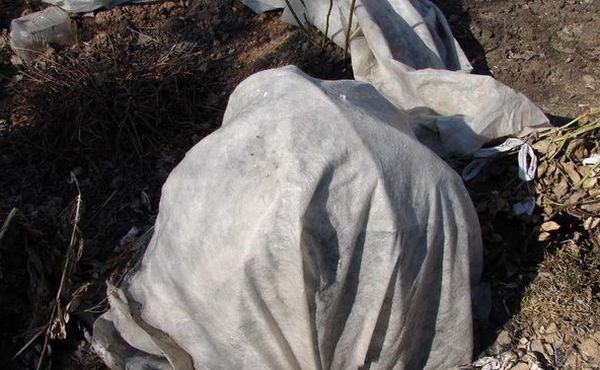

How to cover lavender for the winter
When sheltering lavender for the winter, you must be guided by the following recommendations:
- The bushes must be tied up so that the snow does not get inside the bush.
- Around the bush, the soil is abundantly covered with mulch (dry peat or pine needles). It is not recommended to use fallen leaves. They may contain harmful insects. Viruses and bacteria develop in the growing foliage. When rotting, rotting of the roots and root trunk occurs.
- A hut of spruce branches is erected on top, which are fixed with twine.
- In northern areas, plywood boxes can be used. Some growers prefer to bury the plant in the ground for the winter. The top can be additionally insulated with fir branches. They will keep warm and allow fresh air to circulate easily. The connected branches can still be covered with snow. The more snow there is, the easier the lavender winters.
Plant care
Lavender will appreciate planting in a sunny and hot location. In the shade, it will not reveal all its beauty, it will bloom badly. Dislikes too moist and heavy soils. The soil is not very nutritious, alkaline, with good drainage ability. Wood ash or lime is added to the soil with high acidity.
The flower does not require careful maintenance, grows well without fertilization and frequent watering.High humidity can lead to the development of fungal diseases. Additional moistening is carried out during prolonged droughts so that the quality of flowering does not suffer.
In the spring, at the beginning of the growing season, you can fertilize with organic matter. This procedure is well replaced by soil mulching, especially on old lavender plantings. Excess organic fertilizers lead to the fact that the plant "grows fat" and does not bloom well. At the beginning of summer, potash-phosphorus fertilizers are applied. Mineral dressing has a positive effect on flowering.
Lavender plantations can withstand temperatures up to 20-23 degrees below zero. In the southern regions, shelter is not required in preparation for winter. In the middle lane, it is appropriate to hide lavender under spruce branches, but it is not recommended to cover it with straw or leaves - under these materials the plant can rot and rot. It is useful to cover with snow, its thick layer retains heat well.
In cold areas, narrow-leaved lavender is used. This species adapts better to low temperatures.
If necessary, a lavender transplant is carried out. At the same time, they try to preserve as many roots as possible. They are transferred to a new place no later than two months before the establishment of cold weather, so that the bushes have time to take root.
Lavender grows well in a pot. This method is often used when growing in regions with cold climates, so that you can move the plant indoors for the winter.
Mistakes of novice gardeners
Many budding gardeners make many mistakes when growing lavender in the garden, which leads to its death. The most common errors:
- Abundant watering, deep pruning. The root system begins to rot due to over-watering, and too short pruning, the bushes cannot recover.
- Peat or clay soil without loosening does not allow the roots to breathe.
- Do not rush to remove dried tops.
- The wrong cover provokes the death of the bushes.
- Do not cover the bushes with a film, this will lead to damping of ground shoots.
Lavender is a fairly hardy plant, but it often suffers from weather conditions with improper care. This is especially true for the cold season. Therefore, many gardeners have a question whether it is necessary to cover lavender for the winter and how to do it correctly.
Description
Lavender is a herbaceous plant with beautiful purple flowers, but it is famous not for its external aesthetics, but for its rich aroma. Many people try to grow lavender in their own area precisely because of the pleasant smell that fills the area during the growth and flowering of the plant. In addition, lavender is often dried and then used at home as a flavoring agent.
Sunny regions with rocky soils are considered ideal conditions for lavender to grow. But this does not mean that the plant cannot be grown in other conditions. Everything is quite possible, but you need to adhere to some recommendations (about them below), and also remember about the need for mandatory pruning of the plant.
Lavender grows as a bush. It is updated annually. And every year the bush becomes thicker, and the stems are heavier and harder. If lavender is not trimmed, then only a small amount of fragrant flowers can be counted on. But correct and timely pruning becomes a guarantee of obtaining a large number of flowering shoots that can be harvested several times a year.
Do I need to cover lavender for the winter
The question of sheltering lavender for the winter is still controversial. Many believe that the plant is quite capable of surviving frosts down to -25 ° C, while others advise not to risk this fragrant bush and still prepare it for wintering as carefully as possible.
In fact, a lot depends on the climatic conditions and the region of the country. So, for example, in the middle lane, which includes the Moscow region, frosts are quite strong.But many in such conditions still do not cover the plant, limiting themselves to pruning and tying the bush. As soon as the snow falls, the plant is simply covered with it, creating a natural "hat".
The Volga region is distinguished by more severe winters, in which a drop in temperature to -25 ° C can last up to two weeks or more. And if there is no snow, then most of the landings simply freeze out. Accordingly, it is simply necessary to cover plants in this region.
Siberia and the Urals are distinguished by the most pronounced frosts, in which the temperature can drop to -35 ° C or more. So in addition to the fact that the plant needs to be covered, it is also worth pre-selecting frost-resistant varieties that can withstand such a severe test. One of these species is narrow-leaved lavender. Pruning in these regions is not carried out, since tall shrubs in such conditions have a higher chance of surviving the cold and recovering in the spring. The main thing is to protect the root system.
The southern regions, for example, Krasnodar and the Crimea, do not differ in long and severe frosts, and therefore in such places the plant is usually prepared minimally for winter - they are cut and tied. In addition, it is recommended to pay special attention to the root system, insulating it well. This is explained by the fact that snow in this strip is a rare phenomenon, but dampness and frost often ruin many plants.
Considering all of the above, we can conclude that it is necessary to harbor lavender regardless of the region. But it is important to approach the issue correctly, taking into account the climatic characteristics of the habitat. This will allow you to choose the most optimal option.
Features of preparing lavender for winter in the regions
The shelter of lavender in the middle lane and other regions of Russia has its own nuances. Each area has its own distinctive features that define its unique appearance. How to prepare a plant for winter, given the climatic conditions in the regions, is a key issue that should be considered in more detail.
In the middle lane
Winter weather in central Russia is changeable, with sharp temperature changes and frequent frosts. In January, the thermometer can drop to 30 ° C below zero. Winter is not always accompanied by heavy snowfall. If there is no white blanket, it is strongly advised to cover plantings for the winter. After all, southern lavender is most susceptible to freezing.
The plant should be tightly tied with a rope and covered with spruce branches. Sprinkle the trunk of the bushes with organic mulch. Such measures to protect the landing will be sufficient.
In the Urals and Siberia
In winter, the Atlantic air manages to cool down very much before reaching Siberia and the Urals. In winter, temperatures reach 30–35 ° C below zero. The southern bush must be insulated: tie it with twine and cover with burlap or agrospan. Sprinkle spruce branches on top or build a pine hut.
In the Volga region
The climate of the Volga region is characterized by warm summers and moderately cold winters. Winters are quite long, lasting from late November to early April. Frosts can reach -30 ° C, but this is rare. The average air temperature in winter is -14 ° C. In February, the snow cover reaches its maximum.
Ideal conditions for wintering a fragrant southern plant. You don't have to cover, mulching will be enough. The only condition is to tie the bush with a rope and, if necessary, correct the mulch and throw in snow.
What materials can be covered
If we talk about covering materials, then it is better to give preference to natural or close to them options. But in gardening stores there are also special options that allow you to cover the bush without provoking unwanted effects. Mainly used:
- Sackcloth;
- Wooden or plywood boxes;
- Covering materials such as agrospan or lutrasil;
- Pine needles, twigs or peat soil mulch;
- Lapnik.
Having built a shelter, you need to correct it from time to time, especially if there are strong winds. It is also necessary to throw in snow, if any.
Step-by-step instructions: how to cover lavender for the winter
The correct cover for lavender should be in accordance with the specific region, as mentioned earlier. It is best to proceed according to the following scheme:
- Pruning lavender branches is a grower's decision. But it is imperative to tie them so that no snow gets inside.
- The soil circle near the bush is abundantly mulched with needles or peat. This will help prevent the roots from freezing - the main cause of death of lavender during periods of extreme temperatures or high frosts.
- A kind of hut is made over a tied bush made of cinquefoil, which is fixed with natural threads, for example, with twine.
What materials should not be covered
Oddly enough, but there are materials of both artificial and natural origin, which are not suitable for sheltering lavender for the winter. These include:
- Artificial films;
- Polyethylene;
- Fallen leaves.
All these materials have one thing in common - they create a greenhouse effect, especially at the roots. And the latter also has a number of other disadvantages, such as a high probability of preserving harmful insects in the leaves, as well as various pathogens, including bacteria, viruses and parasites. In any case, such materials threaten not only disease, but also root rot and the death of lavender.
When can the cover be removed
The shelter is removed even when there is complete confidence that the frost has passed. Most often this is the end of March - beginning of April. Accordingly, it is not worth opening the bushes in early spring, since daytime warming during this period is usually replaced by sharp night frosts. This leads to freezing of the soil and the formation of ice, due to which most of the plants die in the absence of shelter during this period.
Important! Many gardeners and summer residents believe that not so much winter cold as spring temperature drops are terrible. Only having the right cover will save lavender from such strength tests.
Autumn pruning
Autumn pruning is an important and crucial moment. The procedure helps to preserve the decorative effect of the bush, prepares the plant for wintering. Lavender has a taproot that goes deep into the soil. Therefore, many varieties are resistant to frost. Spring temperature drops are terrible for the plant. The snow thaws and freezes again, creating a dense ice crust. Oxygen access is limited, the bushes die.
Bushes form in the second year of life.
Algorithm of work:
- Sharp garden shears or pruning shears are treated with alcohol. This is important, otherwise the instrument will infect.
- They examine the bush and, first of all, free it from sick, dry, broken branches.
- The stems of lavender are lignified at the bottom, green at the top. Pruning is carried out 3 centimeters above the lignified part. Completely lignified shoots are not touched.
- The procedure is carried out after re-flowering. If the plant has not had time to bloom, young shoots are not cut off.
- The second case: late with pruning before the onset of cold weather. Plants may not have time to prepare for winter. Therefore, the shoots are not touched until spring. They are tied up, bent to the ground, covered with spruce branches.
See also
Planting, growing and caring for cinquefoil, how and when to cutRead
In the Moscow region, the onset of autumn cold weather can be delayed or come unexpectedly. All actions are associated with climatic conditions in a particular season..
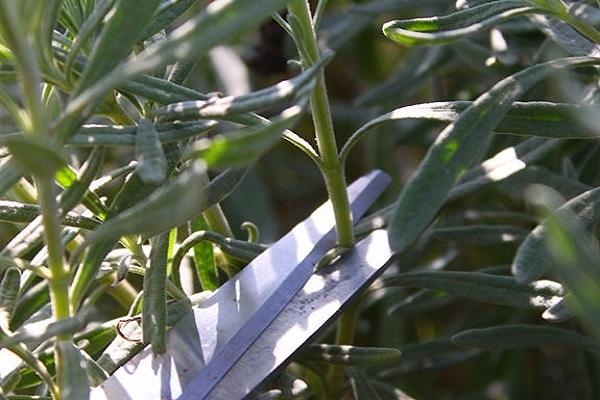

Time and way
During the growing season, lavender needs pruning.
Spring
In early spring, the shelter is removed from the lavender. Sanitary pruning is carried out. Remove frozen, rotten, dried shoots.If in the fall, for some reason, the formation of the bush was not carried out, this is corrected in the spring, according to the same principle as in the fall.
Summer
The first flowering ends in mid-August. To improve decorativeness, to stimulate the growth of new shoots, wilted inflorescences with a pair of leaves are removed.
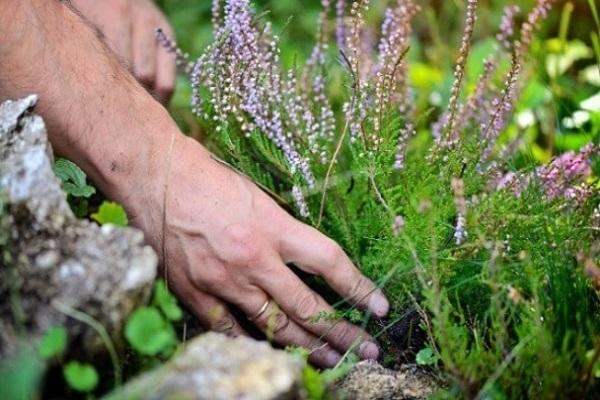

Fall
The second flowering ends in early October. Gardeners immediately start preparing for the winter, so that the plant has time to adapt before the onset of cold weather.
Rejuvenating pruning of old specimens is also carried out in the autumn. In the first year, the outer contour of the bushes is cut off, the central shoots are left. After a year, the outer branches are left, the central branches are removed 10-15 centimeters from the base.


Do I need to feed the plant after that?
In order for the plant to winter well, pruning, feeding, shelter are carried out in the fall. The bush is watered abundantly with water. Once the water is absorbed into the soil, the soil is loosened.
For feeding, they buy mineral complex fertilizers in a flower shop. Add 2 tablespoons of the drug to a bucket of water. The solution is poured around the perimeter of the bush.
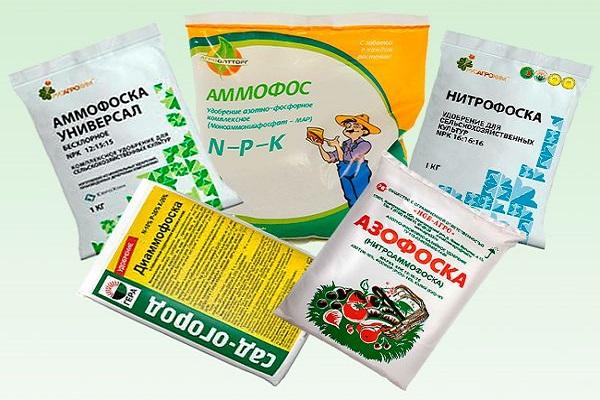

Mistakes of novice gardeners when hiding
The main mistakes of a novice gardener are the main threat to the safety and well-being of lavender. This is especially true for issues of wintering and sheltering the plant. Mainly highlighted:
- Abundant watering, which this plant does not tolerate due to damping off of the roots and trunk.
- Pruning that is done outside of the plan. The first should be done in early spring, and the second in late summer or early autumn. At the same time, it is impossible to cut off the stems shortly before frosts, otherwise the bush will simply not be able to recover after wintering.
- Clay or peaty soil always requires loosening before sheltering. Otherwise, the roots will lose the ability to "breathe".
- The dried stems should be cut after spring has come and the lavender can be opened.
- The hiding place is often incorrectly selected by the gardener, without taking into account the region. As a result, the bush will overwinter, but it will not be able to fully recover after the cold weather.
- Covering the plant with a film together with the ground. If this material is still used, then only to the trunk.
- Leaving the bush untied even in warm regions is a big mistake.
These are the simplest things to consider when organizing a lavender shelter. It should also be borne in mind that some plant varieties are more sensitive to cold weather, and therefore they need to be prepared for wintering more carefully.
General Tips
General tips can be helpful to learn a little more about growing, pruning, caring for and using lavender. So remember:
- You can cut off not two-thirds, but only half of the plant, if the lavender bushes are not very large. Do not worry that at first the bush will seem bare, very soon it will become bushy and thick again.
- In springtime, lavender should be pruned before flowering. But in the fall, on the contrary, after the plant has faded. In any case, don't prune too often. Do this no more than twice a year to avoid disrupting the plant's ability to flower.
- Use gardening gloves when pruning lavender to avoid skin damage, including to protect your hands from calluses.
- Pruning lavender annually will benefit her as it allows for a thicker and more lush bloom for the next season, as well as preventing woodiness.
- Pieces of cut lavender can be used to create ikebana or used to make fragrant dry perfumes.
- Remember not to cut young lavender bushes. The plant needs at least two years to grow strong. After that, it will be ready to be trimmed.
- Do not use blunt tools (pruning shears or scissors) to trim lavender.This will not only lead to the edges of the slices being uneven and shapeless, but will also increase the likelihood of infection.
- Pruning too close to the base of the lavender should not be done. You can only cut off the herbaceous part of the plant. If you omit this recommendation, lavender will take a long time to recover, and the bushes themselves will look uneven. In addition, such pruning can lead to poor flowering afterwards.
- Pruning lavender bushes will be very beautiful: they will have the shape of a circle or semicircle. With a significant number of bushes on the site, you can cut them at the same height, forming spectacular group plantings.
- For specimens over 8-9 years old, which have already lost their decorative appearance, extreme pruning can be carried out. It is the removal of the entire (practically) aerial part of the shoots, including the woody one. In the spring, the plant will either sprout new shoots or dry out. The missing bushes will need to be removed, but the updated ones for more than one year will delight with spectacular flowering.
- Plant care is extremely simple. No special feeding or treatment for diseases is required (lavender is resistant to them). Too often it is not recommended to water the plant, as this provokes the development of fungal diseases. Additional moisture is required exclusively during prolonged droughts to prevent subsequent flowering problems. Organic matter is applied exclusively in spring, if it is required to accelerate the formation of vegetative mass.
- Lavender can withstand temperatures up to 20-23 degrees below zero Celsius. That is why, in the southern regions, plant shelter is not required. For the northern ones, you can use spruce branches (and snow is also a good option) so that the lavender does not freeze. The use of leaves or straw for shelter is taboo, as it leads to rotting and rotting of the plant.
- In colder areas, it is best to plant narrow-leaved lavender, which is more resistant to low temperatures than other varieties.
- A lavender transplant is carried out exclusively as needed. In this case, you should try to take care of the safety of the roots. The transplant is carried out before the cold weather, so that the lavender has time to take root.
- Lavender grows quietly up to thirty years or more, but it is highly discouraged to grow a plant in one place for more than ten years.
- You can use a flower to create a landscape design for a site. The plant looks incredibly beautiful in alpine slides, borders and just as a single flower.
Remember that pruning is needed for lavender, which grows both outdoors and in a pot in the house. This prevents the plant from becoming lignified, which means that the herbaceous part will be preserved, on which aromatic shoots are formed, which are valuable for this culture. If done correctly, lavender will delight you with an incredibly pleasant aroma for a long time.
To learn more about how to properly prune lavender, which is especially important for novice gardeners, you should watch the video below.
How is potted lavender wintering
Lavender has recently come to be appreciated as a container crop. Thanks to this cultivation, it can be moved at any time to different places. But at the same time, the issues of preparing for the winter do not bypass this option of growing a bush. In general, it is enough to limit ourselves to the following steps:
- Timely pruning of the plant according to the schedule.
- Tying the bush with twine.
- By moving the container to a cool, but closed room - a greenhouse, loggia, veranda or balcony.
Some gardeners put the plant in the cellar for the winter. In any case, there is only one condition - a cool, but insulated place without drafts.It is impossible to leave the pots on the street, as a limited amount of soil will quickly freeze and lead to the death of the root system. On the other hand, a warm apartment will not be the best place, since in such conditions the plant will begin to grow. But if there is no choice, after winter all growths are cut off.
In general, the plant does not cause much trouble in its wintering. As practice has shown, lavender can tolerate frosts well enough, and therefore it takes root even in those regions where winter can last up to 170 days. Florists from Denmark and Norway can confirm this.
Drying and applying lavender
Application of lavender after cutting the stems can be different. The easiest way is to simply place the twigs in a vase to decorate your home. An alternative option is to dry the plant in order to preserve it for a longer time, enjoying the amazing aroma.
Lavender can be dried in one of two ways:
- Collect the stems in bunches and hang them with an elastic band. Place lavender to dry in a cool, dry place. Drying should take at least one to two weeks. This method allows you to preserve both the color and aroma of the plant.
- Arrange the stems on a tray or similar dish and place the latter directly in the sun. The drying process will take about five days. This method is faster than the previous one, but the plant tends to lose its color.


Lavender, both dried and fresh, can be used to make handicrafts. The plant has a relaxing scent, which is why lavender is often used to create lotions, soaps, deodorants, and even shampoo. Dried flowers can be used to create essential oil. Lavender is often combined with other plants, such as dried flowers from other plants or rose petals, to create a unique scent.
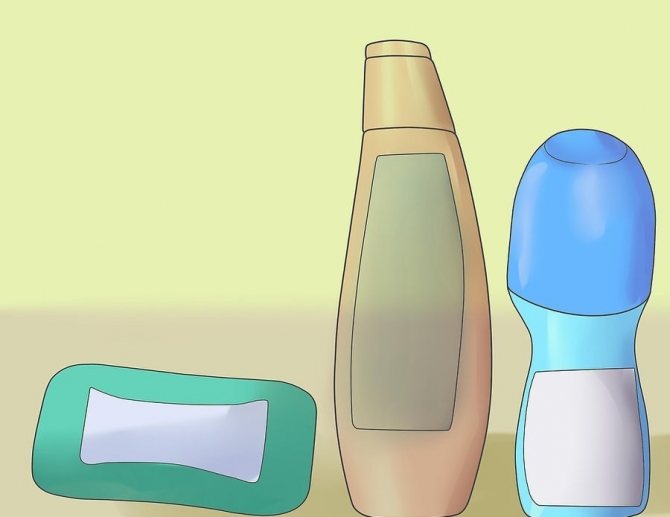

Lavender is an edible plant that can be used in cooking. It is also suitable for sweet food, and for baking, and for cooking meat. It is enough to add a little dried and ground lavender directly to the dish to infuse it with an amazing aroma, or use the whole twigs for decoration.
